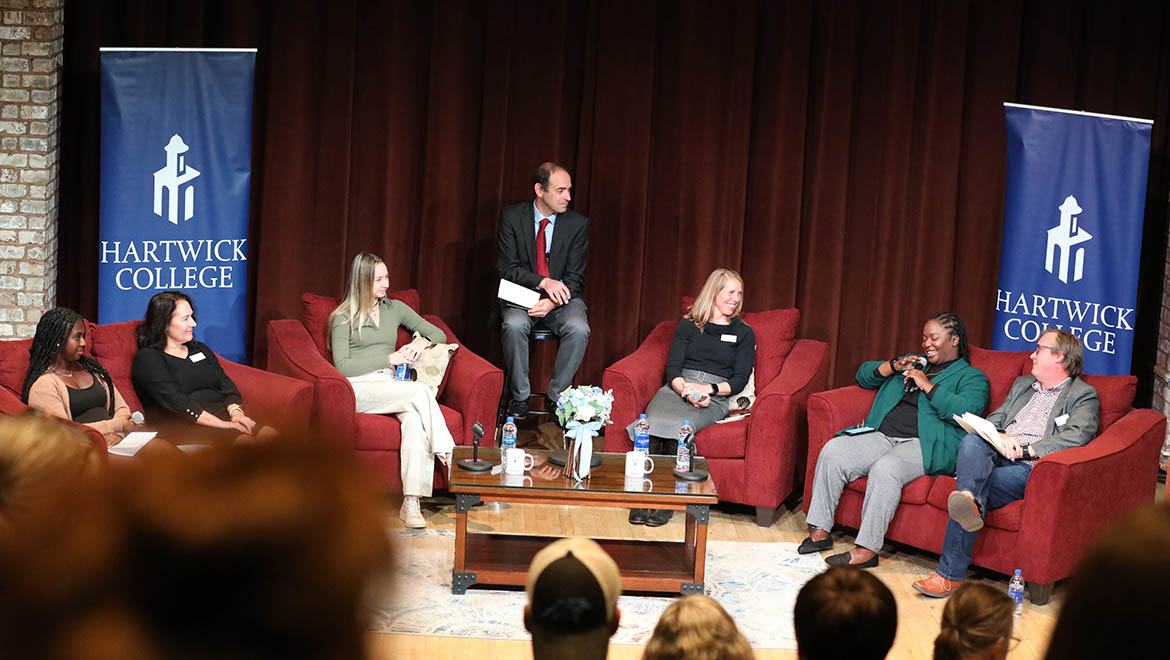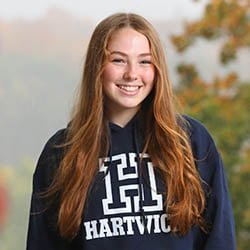Hartwick Tackles the Urban-Rural Divide
As part of President Darren Reisberg’s inauguration celebration, Hartwick hosted an academic symposium, Bridging the U.S. Rural and Urban Divide: Hartwick College Takes on the Challenge.
Students, faculty and staff bring a host of life experiences from both rural and urban settings to the Hartwick campus. Representatives from a variety of College perspectives examine the challenges and opportunities of living and working on our diverse campus. And given the well-documented urban-rural divide in the contemporary U.S., discuss what the community can do to reach mutual understanding, respect and unity.
Addy Colligan ’23 grew up in a tiny town in Rensselaer County, where her mother raised chickens and sheep in their backyard and the closest grocery store was 30 minutes away.
Jade Killikelly ’24 spent her childhood in Jamaica, Queens, where she could walk to a corner grocery, an assortment of restaurants, or the subway station to catch a ride into Manhattan.
When they arrived at Hartwick, these two students embarked on different journeys as they eased their way into college. Colligan, a political science and environment, sustainability and society major, made friends with other rural students who loved to go for walks in the woods. Killikelly, a public health major, tended to socialize with other urban students who liked to check out the restaurants downtown.
While they interacted with a range of students in their classes and campus activities, Colligan, a senator in the Student Government Association, and Killikelly, captain of the women’s tennis team, each felt more comfortable with students from backgrounds similar to their own.
“We cling to what we know as humans, naturally,” Killikelly said. “Coming to a new place, you want some form of consistency and some form of familiarity, so you just go naturally to people you would know and people you would get along with because you’re from the same area.”
As part of the inauguration of Hartwick’s new president, Darren Reisberg, the college held a symposium exploring the urban-rural divide and how it could be bridged. The 90-minute discussion, featuring a six-member panel of students, staff and faculty, attracted 175 people from across campus and the community.
The symposium, proposed by President Reisberg, who comes to Hartwick from Chicago, not only addressed the urban-rural gap on campus, but also the growing schism among citizens across the country. As they discussed ways to narrow the divide, the panelists and audience members agreed that the symposium helped to more clearly define the problem while offering strategies for reaching mutual understanding on campus.
“I think the veil has been lifted for a lot of people who may not necessarily have felt the need to look closer at where they stand within that divide or how they can potentially make it worse or better,” said Biama Charles, a panelist and director of the Office of Diversity, Inclusion and Belonging at Hartwick, who hopes a second symposium will be held on the issue, with new voices contributing to the conversation.


